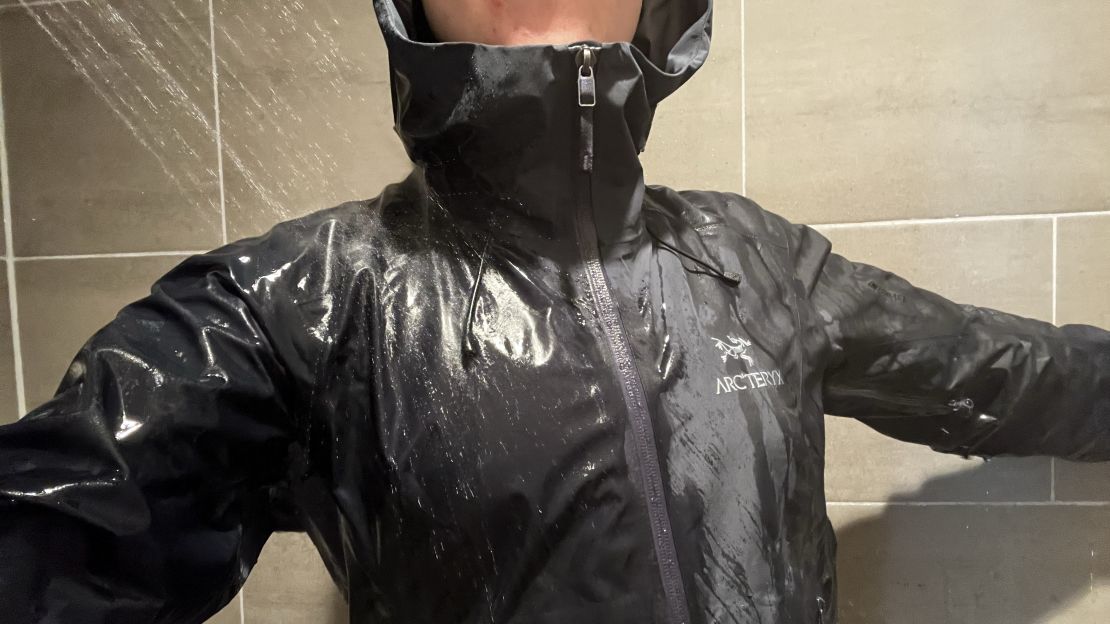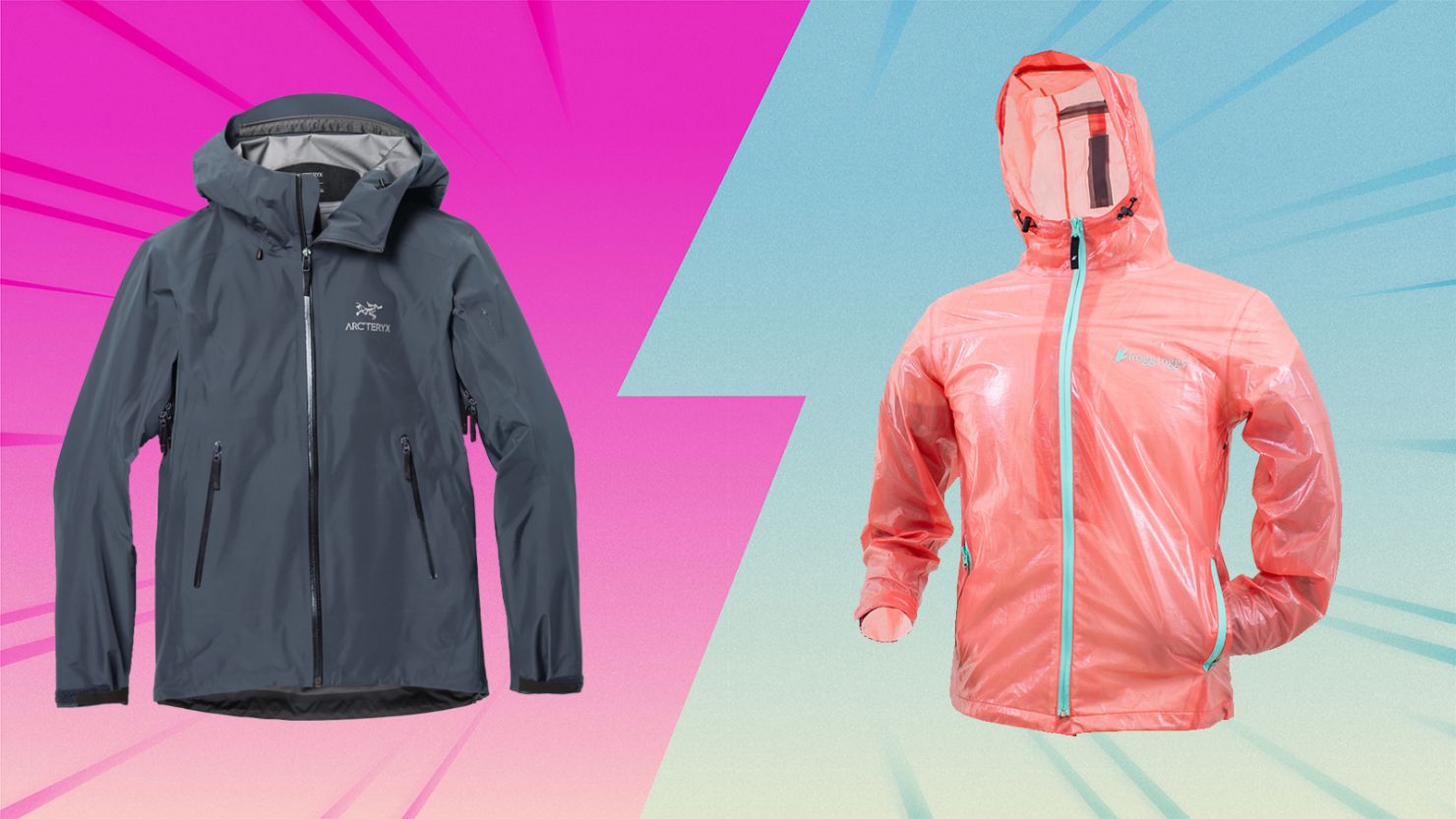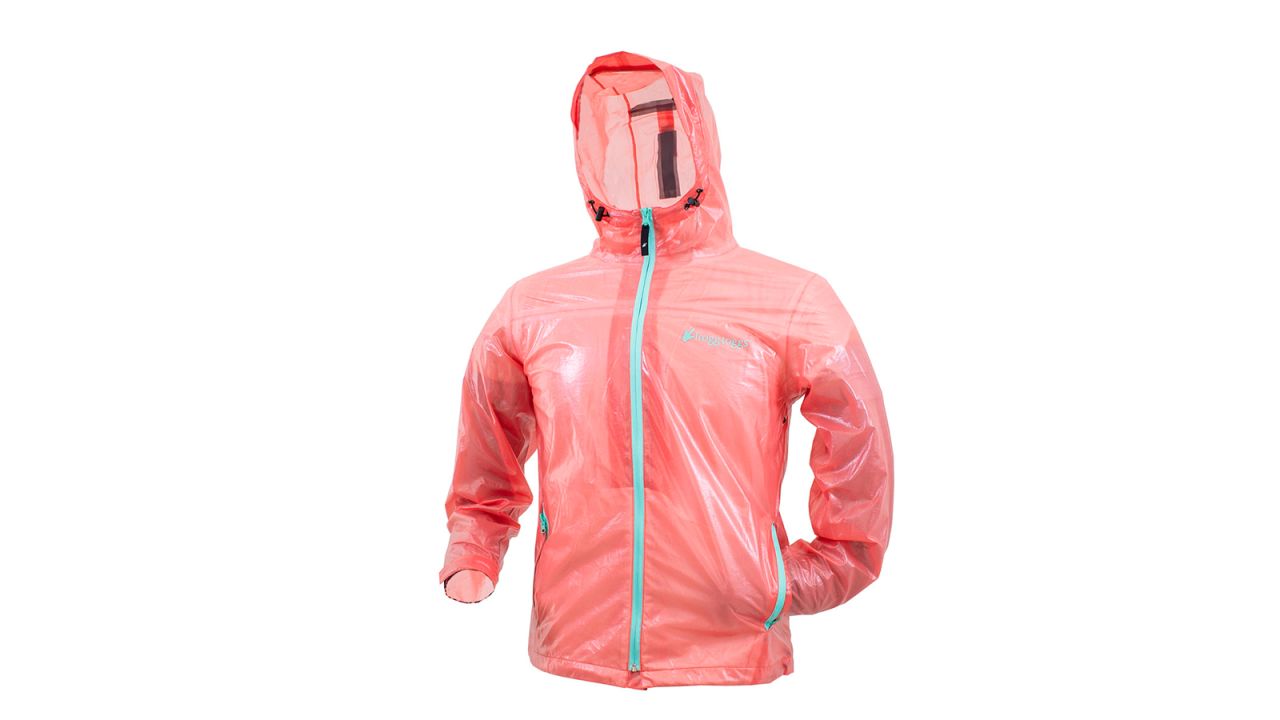This article is part of our series?Battle of the Brands, in which we compare category-leading products to their counterparts to determine which are actually worth your money.
Temperatures are dropping, leaves are turning gold and precipitation has once again returned to the landscape. It can only mean one thing: Fall is here, and with it, the return of rain jacket season.
Whether you’re simply walking your dog around the neighborhood’s rain-soaked streets or embarking on a multi-day backpacking trip in the mountains, you’ll likely want some coverage to keep you warm and dry, but too often, top gear review websites simply slap together a list of pricey technical shells without considering their fan-favorite budget alternatives found online.
That’s why we decided to organize a metaphorical cage match between a top-selling jacket from Amazon (Frogg Toggs’ Xtreme Lite Jacket) and a technical alpine shell that experts love (Arc’teryx’s Beta LT Jacket). We pitted them against each other in a variety of tests, ranging from ten minutes spinning around in the shower to real-world hikes and breathability comparisons. Below, we’ll get into how the two performed in our gauntlet to help you decide which one is worth spending your hard-earned cash on.
Arc’teryx Beta LT Jacket vs. Frogg Toggs Xtreme Lite Jacket at a glance
Designed with rain-soaked environments, multi-day adventures and big alpine expeditions in mind, the Beta LT Jacket is comfortable, breathable, waterproof and windproof for serious outdoors people and those who live in soggy climates.
An affordable and surprisingly well-performing ultralight option, Frogg Toggs’ Xtreme Lite Jacket offers just enough rain protection for most day hikers, evening strollers and dog walkers seeking a decent jacket at a fraction of the cost of big brands.
Quick comparison
| Weight | 12.3 ounces |
8 ounces |
|---|---|---|
| Waterproofing | GORE-TEX, 3-layer |
Frogg Toggs bespoke fabric, 2-layer |
| Length | Hip length |
Hip length |
| Ventilation | Armpit zippers |
Small underarm grommets |
| Fabric | Bluesign-approved nylon |
100% Polyester |
Waterproofing and breathability
At their core, all rain jackets need to be waterproof and not soak through after many minutes of use in monsoonal rains. It sounds like an obvious and easy bar to clear, but, too often, a product’s DWR (durable water-repellent) finish breaks down over many washes, or a garment’s seams aren’t properly taped to seal out moisture where different pieces of fabric connect.

In my real-world testing, Arc’teryx’s Beta LT jacket performed beautifully on a soggy, week-long trek along Tasmania’s Overland Track. For the first four days of the trip, our group was hit with some pretty torrential rain, sleet and wind, and this shell never soaked through, even with a heavy, soggy pack weighing down my back and shoulders. After washing it a couple of times, the garment suffered zero visible wear and tear, and it did well on a five-day, off-trail backpacking trip in Alaska’s Wrangell-St. Elias National Park, as well.
When I completed CNN Underscored’s rigorous, editor-helmed testing regimen in the Arc’teryx, the jacket kept my cotton shirt totally dry after 10 minutes of spinning around in the shower. Though another CNN editor noticed a bit of dampness when he tested this garment (most notably around the zipper areas), mine didn’t leak at all, except for some small drips near my chin.

The Frogg Toggs, on the other hand, performed well on hikes in the Rocky Mountain foothills surrounding Boulder, Colorado, and on rainy, late-night dog walks around my neighborhood, but it had a few shortcomings when the time came to shower test the garment. Though this coat claims to have fully taped waterproof seams, I noticed that, after only 2 to 3 minutes of standing and facing my showerhead, the entire length of the cloth zipper had soaked through and wet my t-shirt. I noticed a bit of moisture on the top of my head as well, likely from the untapped seams lining the hood’s velcro cinch. As such, it’s likely that this jacket would not perform well outdoors in anything more than an afternoon drizzle or a neighborhood stroll.

As for breathability, the Arc’teryx jacket never made me feel clammy or overheated, even on 1,000-foot uphill slogs in the Tasmanian wilds. Having armpit zippers definitely helped in this arena, and the thickness of the fabric sealed out even the gnarliest winds. The Frogg Toggs seemed to breathe and vent decently well on dog walks and short hikes in the Rocky Mountain foothills, but I noticed my sweat building up a bit on the inside of its fabric, causing me to feel sticky when I performed timed interval sprints to get my heart rate up.
Size and weight
Here’s where it becomes important to determine for yourself precisely what you’ll most likely be using your rain jacket for on a regular basis. The Beta LT is a hardcore, breathable alpine shell, meaning that it’s designed to shed gnarly inclement weather while not overheating on long outings in the mountains. As such, it weighs in at a stouter 12.3 ounces, due to its thicker, three-layer construction and added features, like pit-zips and a fully cinchable hood.

Frogg Togg’s Xtreme Lite Jacket is just what it sounds like, a no-frills, ultralight raincoat that weighs a scant 8 ounces and packs down super small. It’s not nearly as thick, durable, breathable or feature-heavy as the Arc’teryx, but for $40, it’s a great bargain if you only want something for short walks around town or for that odd, unexpected rain shower when you’re out hiking or backpacking. Due to its poor performance in the shower test, in which its zipper totally soaked through from top to bottom, I wouldn’t recommend it for intensely rainy climates like the Pacific Northwest or for alpine climbing and multi-day expeditions.
Material and fit
In my opinion, when a jacket costs $450, it better have an excellent sustainability story, and, thankfully, Arc’teryx’s Beta LT is made with bluesign-approved materials. It’s also constructed with breathable, waterproof Gore-Tex, which is designed to keep you dry while staying breathable on your uphill pursuits. It’s able to do this because its membrane is full of teeny tiny holes that are large enough to vent body heat, but too small for water droplets to pass through.

The fabric used for the Xtreme Lite Jacket is simply listed on the website as being “100% polyester” and “2-ply.” After deep diving on the internet for more details, it seems that the brand uses a proprietary DriPore Gen 2 waterproof fabric in its two-layer garments, which is melted together using ultrasonic sound waves, rather than stitching. The jacket felt a little like a trash bag when I first put it on, but it seemed to vent well (though not as well as the Arc’teryx) when walking and running with my dog in Colorado.
Given the thickness of the Beta LT’s shell fabric, I was surprised that it moved well with my body, even as I doused it in the shower. I didn’t notice any obvious areas of constriction in the arms, shoulders or waist, and the women-specific fit mapped my body excellently. When I put on the Xtreme Lite Jacket, I noticed that it was a bit oversized in the chest and shoulders, which wasn’t as flattering, but it allowed for a lot of freedom of movement. The fabric is stretchier than what’s found in Arc’teryx’s Beta LT, but it also felt much less durable and more like plastic when worn against bare arms.
Bottom line
Does everyone need to spend $450 on a top-tier rain jacket? No. But should big-time outdoor enthusiasts invest in a jacket that won’t soak through on a big, multi-day trek or a winter day hike in the Cascades? Definitely.
The difference between Arc’teryx’s Beta LT rain jacket and Frogg Togg’s Xtreme Lite Jacket is kind of like the difference between apples and oranges. Are they both fruit? Yes. But do they taste the same? Not at all.

If you’re simply looking for a “good enough” rain jacket that’ll protect you on mellow day hikes, dog walks around the neighborhood and during the occasional unexpected shower while camping, it’s likely that Frogg Togg’s Xtreme Lite will do everything you need at one-tenth the cost of a sturdy Arc’teryx shell.
If you’d rather get something that’s substantially more durable without dropping the full $450 on an Arc’teryx, consider the $180 Patagonia Torrentshell 3L, which won our “tried and tested” feature.

But if you’re planning a thru-hike, embarking on a mountaineering trip, or live in a state that’s beset by rainy days most of the year (I’m looking at you, Oregon and Washington), it’s worth investing in a solid rain shell to keep yourself warm, dry and comfortable. Arc’teryx’s Beta LT performed well on multiple long-distance treks during my testing period and kept my t-shirt dry in the shower, even after multiple washes. It was more breathable than the Frogg Toggs, had more features (like pit zips) and it’s made by a company that’s committed to sustainability. If you’re a hardcore adventurer or know you’ve got a big trip coming up, I sincerely feel it’s worth the extra money.




















